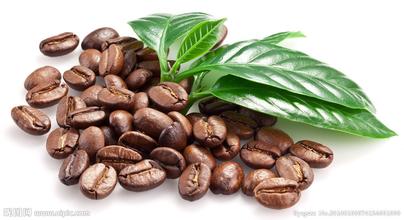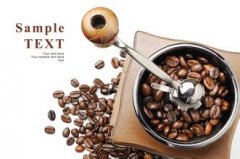Brazil fine coffee varieties planting market price profile

Moreover, the half-sun method also inherited the advantages of the sun method to improve the sweetness, but less thankless soil flavor, won the praise of international coffee experts. The winners of Brazil's "extraordinary cup" of national treasure beans almost all use the half-sun method, because this treatment can reduce the smell of soil and wood, and enhance the aroma and sweetness of Brazilian beans, which is most suitable for single products. as a result, half-sun drying has become the "wardrobe" of Brazilian boutique beans.
But this does not mean that the sun method has declined in Brazil, the ultra-low humidity of Minas central and western Serrado is still dominated by the sun method. The manor here believes that as long as the sun is strictly controlled, it can best highlight Serrado's unique nutty flavor and sweetness, while half-sun has become a supporting role in Serrado. The manor in South Minas is the most inclusive, using half-sun, sun and water washing respectively, showing the most yuan of flavor. In addition, Bahia province is famous for its washed beans, but almost all the winners in major cups are half-sun beans, and the coffee farms belonging to the diamond plateau, which are becoming popular, are famous for half-sun exposure.
The use of sun, half-sun or water washing methods depends on the local humidity conditions, as it can seriously affect whether the pods are overfermented and moldy during drying. Local estates will consider the best way to reduce the growth of mold to deal with coffee beans. In principle, the washing method should be used in the areas with high humidity, and the sun or half-sun should be used in the areas with low humidity.
◆ Origin: Brazil, Brazil
◆ baking method: City Roast
◆ features:
1. Palate: slightly bitter and sour, mild in nature.
two。 Fragrance: light and elegant, the fragrance is in the middle.
3. Vision: beans with large grains, light green or yellowish.
One of the world's largest coffee producers and exporters, which can be called the "coffee continent", accounts for about half of all world output. It is especially famous for Brazilian Brazil Santos exported from Santos port in Sao Paulo, with NO.2 Screen 18-19 as the standard; raw beans are large, light green or yellowish, and are almost always used for blending. Meticulous aroma, comfortable and mild flavor, suitable for those who first come into contact with coffee to try to drink, sour and bitter taste can be mixed by baking, moderate roasting soft flavor, moderate taste, deep baking has a strong bitter taste, suitable for blending coffee.
Brazil is the strongest coffee producer in the world, and coffee technology is leading the world. A few years ago, scientists used genetic comparisons to find out whether the descendants of Bourbon and Tibica introduced 300 years ago still exist in Brazil. it was found that Brazil's existing bourbon and Tibica had nothing to do with their counterparts in Yemen, Ethiopia, Bourbon and Kenya, and had long been assimilated or localized. Ethiopia is the world's largest center for Arabica variety improvement and innovation.
Ninety percent of today's Arabica improved varieties were born at the Institute of Agronomy in Brazil (IAC). There are countless varieties of coffee in Brazil, in addition to the four well-known heavenly kings Bourbon, Kaddura, Kaduai and the New World, there are also aggressive variants or mixed-race coffee, such as yellow bourbon, Icato, Obata, Akaia and Ruby. Among them, Icato and Obata are the most noteworthy, because these two varieties are hybrids of Arabica and Robusta, which were introduced more than a decade ago and have not been paid much attention because they are stained with the evil smell of thick beans. However, after years of reverse hybridization between Brazilian scientists and Arabica, the flavor has been significantly improved. "the devil's tail is gradually purified to the tail of an angel." it is no different from high-quality Arabica. However, the output and disease resistance are better than Arabica, and have gradually come to the fore in the cup test competition.
The Brazilian Coffee Research and Development Association has teamed up with 40 research units to launch the Coffee chromosome Project in 2002 ○○. Thirty thousand genes resistant to drought and diseases and insect pests have been identified from samples from the Coffee Genome Bank. Scientists believe that within 10 years, the commercial cultivation of "tomorrow coffee with good flavor, high yield and super resistance" will begin, and the average yield of coffee per hectare in Brazil will increase from the current 19 bags (1140 kg) to 32 bags (1920 kg). In addition, Brazil's research on natural low-caffeine coffee trees has not been suspended, and the progress remains top secret. The author believes that tomorrow's coffee must not only have high yield, strong disease resistance and delicious taste, but also natural low caffeine. If it can be done, it will certainly stimulate coffee consumption. People who usually drink two large cups and worry about exceeding the upper limit of 300 mg caffeine can rest assured to drink a few more cups without affecting their sleep.
Brazilian coffee farms choose sun, half-sun or water washing treatments according to the dry and humidity conditions of the climate to show the best regional flavor. Such a pluralistic approach is rare in the world.
Before 1999 ⊙, rough tanning was almost always used in Brazil. This is the main culprit for Brazilian beans to catch the smell of sour and rotten wood, because coffee fruits get moldy and smell when the rain returns to moisture or the fruit is cracked during a two-to three-week exposure. This problem has been criticized for a long time, which has dealt a heavy blow to the image of Brazilian coffee. After 1999 ⊙, Brazilian research units developed a half-sun method to shorten the treatment time based on the drier climate in Brazil. After removing the pulp, the coffee fruit will be exposed to the pectin-coated pods for one to three days, and then machine-dried to a moisture content of 12%, which can be placed in a storage container. The Brazilian half-sun method greatly shortens the working time (the waste time of the traditional sun method is two to three weeks). It also reduces the chance of coffee beans getting a bad smell, and the quality is greatly improved.
Important Notice :
前街咖啡 FrontStreet Coffee has moved to new addredd:
FrontStreet Coffee Address: 315,Donghua East Road,GuangZhou
Tel:020 38364473
- Prev

A brief introduction to the treatment method of grinding degree and baking degree of Brazilian boutique Syrador coffee
From 2011 to 2012, in order to find out the variety of this part of the coffee, I personally went to Dahongpo to have a look. According to the collected samples and the morphological analysis of the trees, it can be basically determined that this part of the coffee tree introduced by Yang Fakuan is bourbon or bourbon variety Kaddura boutique coffee farm is put forward by the senior coffee practitioner Wen Coffee, and combined with high-quality and multi-land producing areas, experienced.
- Next

A brief introduction to the cultivation of Yellow Bourbon Coffee beans in Brazil
Santos comes from the port of PORTO DE SANTOS, a port in the Atlantic Ocean in southeastern Brazil. Among the coffee exported from the port of Santos, there are Brazilian coffee from different producing areas, of which Minas Gerais is of the best quality. The bourbon of Brazil's Bourbon Santos comes from the BOURBON island of the Bourbon Inambek Coffee Tree.
Related
- Detailed explanation of Jadeite planting Land in Panamanian Jadeite Manor introduction to the grading system of Jadeite competitive bidding, Red bid, Green bid and Rose Summer
- Story of Coffee planting in Brenka region of Costa Rica Stonehenge Manor anaerobic heavy honey treatment of flavor mouth
- What's on the barrel of Blue Mountain Coffee beans?
- Can American coffee also pull flowers? How to use hot American style to pull out a good-looking pattern?
- Can you make a cold extract with coffee beans? What is the right proportion for cold-extracted coffee formula?
- Indonesian PWN Gold Mandrine Coffee Origin Features Flavor How to Chong? Mandolin coffee is American.
- A brief introduction to the flavor characteristics of Brazilian yellow bourbon coffee beans
- What is the effect of different water quality on the flavor of cold-extracted coffee? What kind of water is best for brewing coffee?
- Why do you think of Rose Summer whenever you mention Panamanian coffee?
- Introduction to the characteristics of authentic blue mountain coffee bean producing areas? What is the CIB Coffee Authority in Jamaica?

